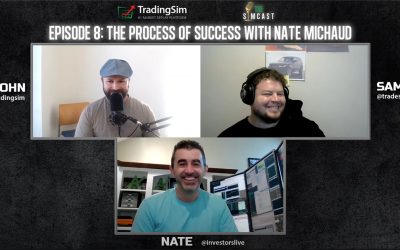The Traders4ACause 2018 Charity Conference is coming up on October 12-14 in Las Vegas, Nevada. These events are always a great opportunity to learn from some of the most successful traders in the world. This is one of the few conferences that is tailored specifically for active stock traders. Every year, some of the brightest traders share their strategies and insights with the attendees. The events provide a great opportunity for learning and networking.
Phil (@OzarkTrades) put together a great presentation on trading rules and risk management. Phil is a successful trader who has been trading full-time since college. He’s been through the ups and downs of trading and shared some great advice in the video below.
Key Takeaways from Phil’s Presentation
The main takeaway from Phil’s presentation is straightforward: create trading rules and minimize losses. This is the first thing that most traders learn, however it’s easier said than done. Sometimes, a simple insight or new perspective can really help the message sink in. Here are a few of the key takeaways from Phil’s presentation.
1. Traders Fail Because of Their Losses
The number one reason traders fail is because they let their losses get out of control. Think about it – the only way to really take yourself out of the game is by running out of capital.
Sure, there are other factors that contribute to a trader’s success, but risk management keeps you alive. You can refine your setups, strategy, and tools over time.
2. A Single Loss Can Wipe Out Months of Gains
Most traders know that they should be cutting losses. There’s not a single trader who hasn’t heard the mantra, “cut losses” over and over again.
That said, we’re all guilty of ignoring this rule, and the results are costly. What starts as a $500 loss can quickly turn into $1000, $3000, etc. Before you know it, you’ve wiped out your gains for the past few months. It’s important to keep this in mind when rationalizing a loss. What starts as a “small loss” can quickly wipe out months of hard work if you let it get out of control.
3. Traders Should Study Their Losses
Traders are always looking for the next great setup – you know, that game-changing trade that you’ll talk about with all of your trading buddies. While most traders are focused on looking forward, many of them fail to reflect on their trading history.
Traders should take the time to study their losses so they can be avoided in the future. Take the time to think about why you lost on a trade and what can be done to prevent this type of loss in the future.
4. Don’t Add to Losing Positions
It’s very easy to become stubborn when faced with a losing trade. We’ve all been there. We figure the stock will turn soon, and the last thing we want to do is sell at the bottom or cover at the top. Some traders will even double down instead of admitting they were wrong.
Remember, a stock can always go higher when you’re short and lower when you’re long.
Adding to a losing position is never a good idea. Don’t be stubborn – take the loss and move on.
5. Always Have a “Stop” In Place
“Stops” provide the foundation for a proper risk management strategy. A “stop” is the price at which you plan to exit a trade when it goes against you. You should know your “stop” price before you enter the trade.
You can choose to set either a mental stop or a hard stop (stop loss order). Regardless of which type of stop you use, the most important part is adhering to the stop loss.
6. Create Trading Rules and Stick to Them
Trading rules are used to guide you in the stock market. They help you decide what and what not to do at times when you may be influenced by your emotions. Trading rules won’t be the same for every trader. For example, one trader may have a rule to avoid short trades and another may have a rule to avoid long trades.
It’s important to create trading rules for your personal strategy and risk tolerance. The second part is actually following these rules.
99% of traders would make more money (or lose less) if they simply followed their trading rules.
7. Focus on Your Best Trading Setups
Every trader is unique, but most traders have a few setups that work the best for them. For some traders, these are short setups, for others these are long setups.
Traders should focus on their high probability setups and avoid any subpar setups. You don’t need to trade every day, and boredom trades will get you in trouble.
8. The Big Money is in the Big Wins
To build on the previous takeaway, the most successful traders know that the big money is in the big wins. Don’t feel forced to trade – you’ll know when there’s a great setup.
This doesn’t mean you should only chase big profits; consistency is important. It means you should focus on the best setups at the best times – no scalping or boredom trades. A trader who averages $1000 wins shouldn’t be trying to scalp stocks for $100.
9. Always Trade With a Free and Clear Mind
Psychology plays a major role in trading. If you’re tired, anxious, or upset, your trading is likely to suffer. Never force a trade. If you’re not in a condition to trade, don’t trade. This may feel unproductive, but it actually helps you avoid potential losses.
You should also avoid “vengeance” trading, trying to make back losses, or forcing a trade just to make money.
Join Us At Traders4ACause 2018
Every year, we have amazing speakers who present at the Traders4ACause conference. It’s the one time every year where you have the chance to learn from some of the best traders and talk with them in person.
We have an exciting event planned for this year. Make sure to get your tickets here.











awesome…… Thanks
Believe it or not, this advise never grows old. Sounds repetitive, but cutting loses is an art and it is as hard as a diamond cutter to figure out. Thanks IU